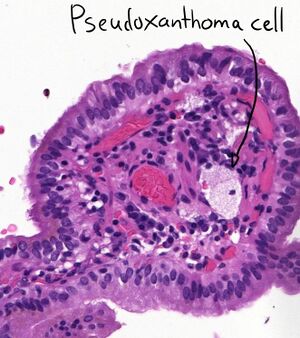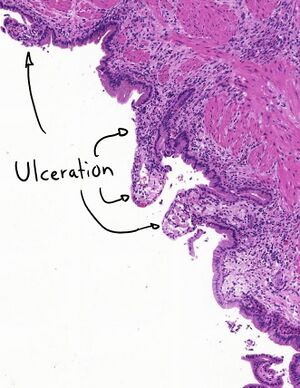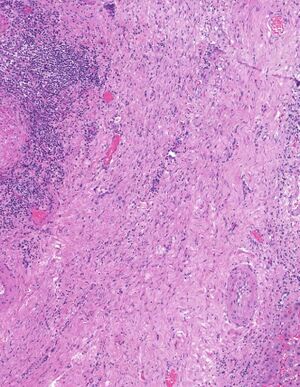28. Chronic cholecystitis
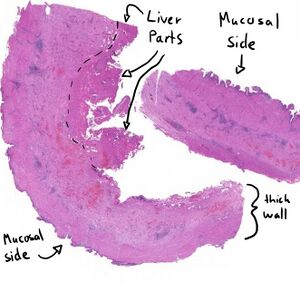
Staining: HE
Organ: Gallbladder
Description:
We can see two pieces the gallbladder. The wall of the gallbladder is thickened. Some places you can see scar tissue formation. The mucosa is ulcerated at some places. There is leukocyte infiltration in many places. Some large cells close to the mucosa have a “foamy” morphology.
Diagnosis: Chronic cholecystitis.
Causes: See theoretical topic 15
Theory:
The thickening of the wall and the resulting fibrosis is characteristic for chronic cholecystitis. Ulceration of the mucosa is also common.
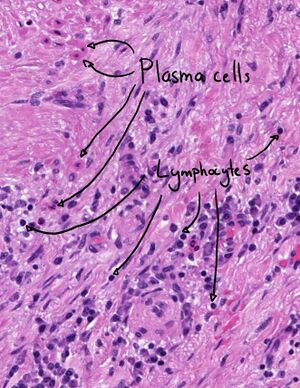
Because this is a chronic inflammation and not an acute one will we not see any granulocytes, only macrophages and lymphocytes.
The foamy cells are a type of macrophages called pseudoxanthoma cells. They’re macrophages that have ingested cholesterol.
We can see a small part of the liver and liver capsule attached to the gallbladder as well. When there is a chronic inflammation of the gallbladder and due to the scar formation will it attach to the liver. Therefore, it is impossible to cut out the part of the gallbladder to make a slide without getting some liver on the slide as well.
